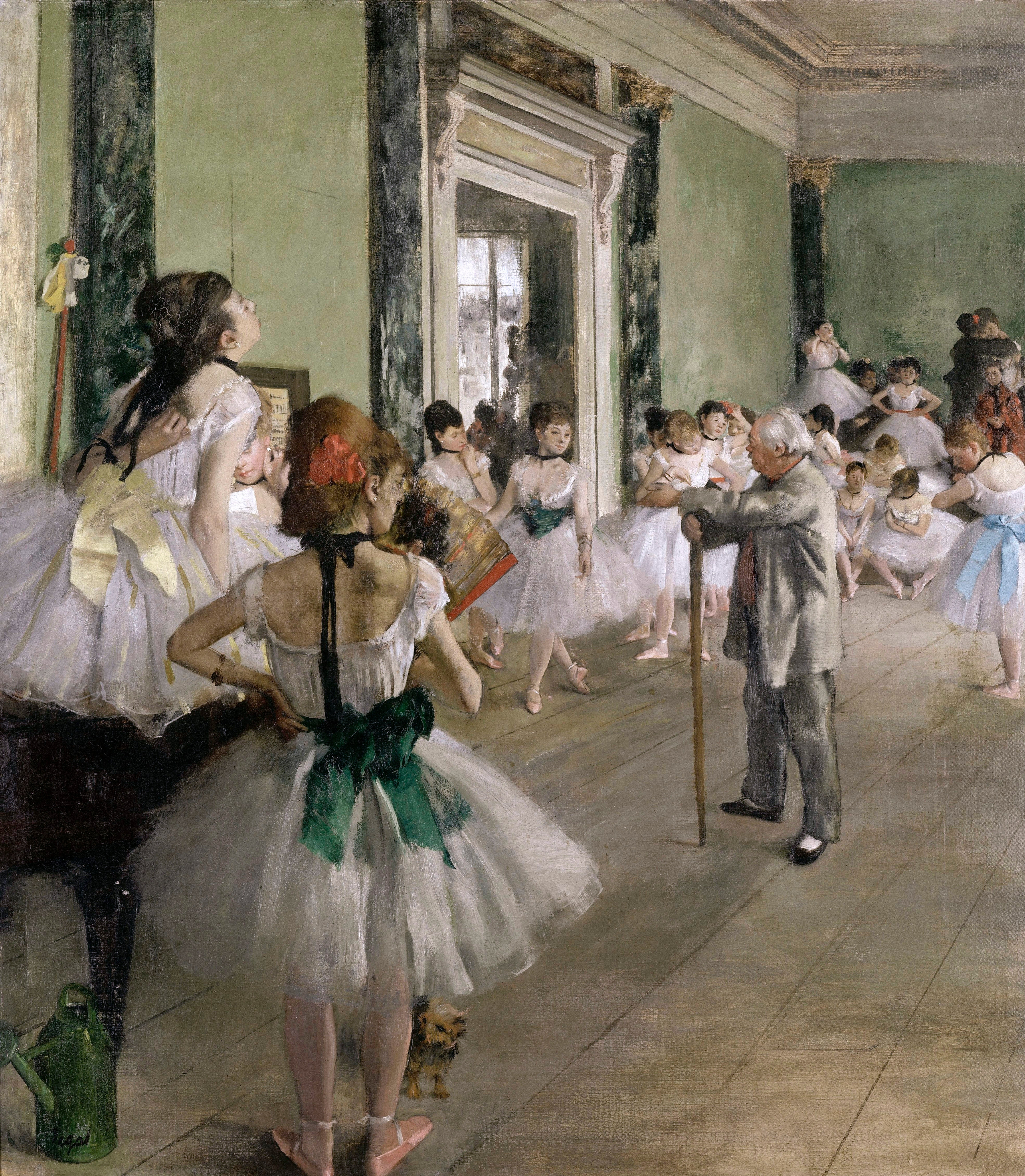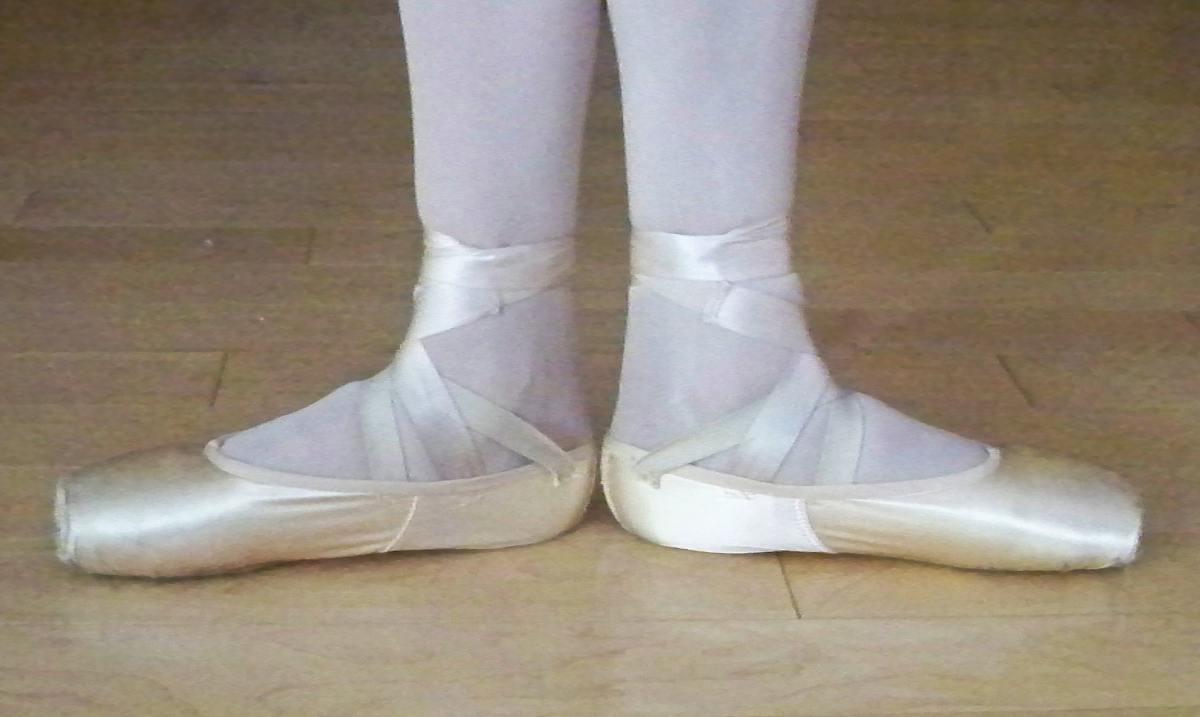|
Barre (ballet)
A barre () is a stationary handrail that provides support for people during various types of exercise. Barres are used extensively in ballet training and warming up, warm up exercises, where such exercises are commonly referred to as ''barre work''. In a ballet class, barre may also refer to the part of the class that involves barre work. Barres are also used for warm up exercises in other types of dance, as well as in general fitness programs. Construction The design of a barre—which includes both the handrail and its support mechanism—depends on whether the barre is to be portable or permanently located. A permanent barre typically consists of a handrail that is mounted to and supported by a wall, whereas a portable barre consists of a handrail mounted onto a rigid or adjustable, free-standing supporting structure. Barre height is typically near waist level of a dancer. Some barres have two parallel handrails at different heights to accommodate people of differing height ... [...More Info...] [...Related Items...] OR: [Wikipedia] [Google] [Baidu] |
Handrail
A handrail is a rail that is designed to be grasped by the hand so as to provide safety or support. In Great Britain, Britain, handrails are referred to as banisters. Handrails are commonly used while ascending or descending stairways and escalators in order to prevent injurious falls, and to provide bodily support in bathrooms or similar areas. Handrails are typically supported by balusters or attached to walls. Similar items not covered in this article include grab bar, bathroom handrails—which help to prevent falls on slippery, wet floors—other grab bars, used, for instance, in galley (kitchen), ships' galleys, and barre (ballet), barres, which serve as training aids for ballet dancers. Guard rails and balustrades line drop-offs and other dangerous areas, keeping people and vehicles out. British specifications British Standard and British Standard Code of Practice are harmonized to European Normal (EN) series. Handrail height is set between . US specifications Dimens ... [...More Info...] [...Related Items...] OR: [Wikipedia] [Google] [Baidu] |
Ballet
Ballet () is a type of performance dance that originated during the Italian Renaissance in the fifteenth century and later developed into a concert dance form in France and Russia. It has since become a widespread and highly technical form of dance with Glossary of ballet, its own vocabulary. Ballet has been influential globally and has defined the foundational ballet technique, techniques which are used in many other dance genres and cultures. Various schools around the world have incorporated their own cultures. As a result, ballet has evolved in distinct ways. A ''ballet'' as a unified work of art, work comprises the choreography (dance), choreography and music for a ballet production. Ballets are choreographed and performed by trained ballet dancers. Traditional classical ballets are usually performed with classical music accompaniment and use elaborate costumes and staging, whereas modern ballets are often performed in simple costumes and without elaborate sets or scenery ... [...More Info...] [...Related Items...] OR: [Wikipedia] [Google] [Baidu] |
Warming Up
'Warming up' is a part of stretching and preparation for physical exertion or a performance by exercising or practicing gently beforehand, usually undertaken before a performance or practice. Athletes, singers, actors and others warm up before stressing their muscles. It is widely believed to prepare the muscles for vigorous actions and to prevent muscle cramps and injury due to overexertion. Exercise A warm-up generally consists of a gradual increase in intensity in physical activity (a "pulse raiser"), joint mobility exercise, and stretching, followed by the activity. For example, before running or playing an intensive sport, athletes might slowly jog to warm their muscles and increase their heart rate. It is important that warm-ups be specific to the activity, so that the muscles to be used are activated. The risks and benefits of combining stretching with warming up are disputable, although it is generally believed that warming up prepares the athlete both mentally and ph ... [...More Info...] [...Related Items...] OR: [Wikipedia] [Google] [Baidu] |
Ballet Technique
Ballet technique is the foundational principles of body movement and form used in ballet. It is an important aspect of ballet performance because ballet (especially classical ballet) puts great emphasis on the method and execution of movement., pp. 6-7 & 21. The techniques found in classical ballet are a framework for many other styles of dance, including jazz and contemporary ballet. Aspects of ballet technique include alignment, which refers to keeping the head, shoulders, and hips vertically aligned. Turnout refers to completing movements with legs rotated outward; this promotes clean footwork, graceful '' port de bras'' (movement of the arms), and correct body positions, lines and angles. Other aspects of ballet technique include posture, toe pointing, keeping shoulders down, and pulling up, which combines proper posture and lifting of the muscles to increase turnout and enhance alignment and thus improve the quality of turns. Ballet technique is also used to exhibit '' ballon ... [...More Info...] [...Related Items...] OR: [Wikipedia] [Google] [Baidu] |
Ballon (ballet)
Ballon () is the appearance of being lightweight and light-footed while jumping. It is a desirable aesthetic in ballet and other dance genres, making it seem as though a dancer effortlessly becomes airborne, floats in the air, and lands softly. The name is widely thought to be derived from the French word ''ballon'' (meaning "balloon"), though it has been dubiously claimed that the name was inspired by French ballet danseur Claude Balon, who was known for performing exceptionally light leaps. Physics A dancer will appear to defy the laws of physics when ballon is exhibited effectively. For example, during a grand jeté, the dancer may appear to hover in the air. Physically, the dancer's center of mass follows a ballistic trajectory, as does any projectile A projectile is an object that is propelled by the application of an external force and then moves freely under the influence of gravity and air resistance. Although any objects in motion through space are projectiles, t ... [...More Info...] [...Related Items...] OR: [Wikipedia] [Google] [Baidu] |
Positions Of The Feet In Ballet
The positions of the feet in ballet is a fundamental part of classical ballet ballet technique, technique that defines standard placements of feet on the floor. There are five basic positions in modern-day classical ballet, known as the first through fifth positions. In 1725, dancing master Pierre Rameau credited the codification of these five positions to choreographer Pierre Beauchamp. Two additional positions, known as the sixth and seventh positions, were codified by Serge Lifar in the 1930s while serving as Ballet Master at the Paris Opéra Ballet, though their use is limited to Lifar's choreographies. The sixth and seventh positions were not Lifar's inventions, but revivals of positions that already existed in the eighteenth century, when there were ten positions of the feet in classical ballet. Five basic positions The first basic position requires the feet to be flat on the floor and turnout (ballet), turned out (pointing in opposite directions as a result of rotating t ... [...More Info...] [...Related Items...] OR: [Wikipedia] [Google] [Baidu] |
Positions Of The Arms In Ballet
There are two basic positions of the arms in ballet. In one, the dancer keeps the fingers of both arms fully touching to form an oval shape, either almost touching the hips, or at navel level, or raised above the dancer's head. In the other, the arms are extended to the sides with the elbows slightly bent. These positions may be combined to give other positions. Names differ according to the school/method followed, such as Vaganova, French, Royal Academy of Dance (RAD), Cecchetti, etc. of the arms; the corresponding ''allongés'' positions are obtained by stretching the elbows and rotating the palms of the hands downwards. '' Vaganova'' or Russian school: * Bras bas or preparatory position: both arms are down and rounded with both hands just in front of the hips, fingers almost touching. * First position: maintaining the curved shape, arms are brought up so that the tips of the fingers are in line with the navel or no higher than the sternum. * Second position: arms are out to ... [...More Info...] [...Related Items...] OR: [Wikipedia] [Google] [Baidu] |
Pointe
Pointe technique ( ) is part of classical ballet involving a technique that concerns ''pointe work'', in which a ballet dancer supports all body weight on the tips of fully extended feet when wearing pointe shoes. A dancer is said to be ''en pointe'' () when the body is supported in this manner, and a fully extended vertical foot is said to be ''en pointe'' when touching the floor, even when not bearing weight. Pointe technique resulted from a desire for female dancers to appear weightless and sylph-like. Although both men and women are capable of pointe work, it is most often performed by women. Extensive training and practice are required to develop the strength and technique needed for pointe work. Typically, dance teachers consider factors such as age, experience, strength and alignment when deciding whether to allow a dancer to begin pointe work. Technique Pointe technique encompasses both the mechanical and artistic aspects of pointe work. In particular, it is concerned ... [...More Info...] [...Related Items...] OR: [Wikipedia] [Google] [Baidu] |
Partnering (dance)
Dance partnering is dancing performed by two or more dancers (traditionally a male leader and a female follower, though forms such as Contact improvisation and Fusion dance have troubled this traditional dynamic), that strive to achieve a harmony of coordinated movements. Many forms of dance rely on the application of :Partner dance technique, partnering dance techniques that facilitate coordinated movements by dancers. Dance partnering technique appears in various forms in many types of dance and is an essential part of all partner dances. Scholars of dance, including anthropologist Cynthia Novack, philosopher Ilya Vidrin, ethnomusicology David Kaminsky, cognitive scientist Michael Kimmel, among others, have written about techniques of partnering in different forms. Technique A variety of partner dance techniques are employed in dance partnering. Typically, the technique used for a particular dance style is generally focused on either communication between partners or physical su ... [...More Info...] [...Related Items...] OR: [Wikipedia] [Google] [Baidu] |
Plié
Because ballet became formalized in France, a significant part of ballet terminology is in the French language. A À la seconde () (Literally "to second") If a step is done "à la seconde", it is done to the side. 'Second position'. It can also be a balance extending one foot off the ground in ‘Second Position’. À la quatrième () One of the directions of body, facing the audience (''en face''), arms in second position, with one leg extended either to fourth position in front (''quatrième devant'') or fourth position behind (''quatrième derrière''). À terre () Touching the floor; on the floor. Adagio Italian, or French ''adage'', meaning 'slowly, at ease.' # Slow movements performed with fluidity and grace. # One of the typical exercises of a traditional ballet class, done both at barre and in center, featuring slow, controlled movements. # The section of a '' grand pas'' (e.g., '' grand pas de deux''), often referred to as ''grand adage'', that features dance part ... [...More Info...] [...Related Items...] OR: [Wikipedia] [Google] [Baidu] |






